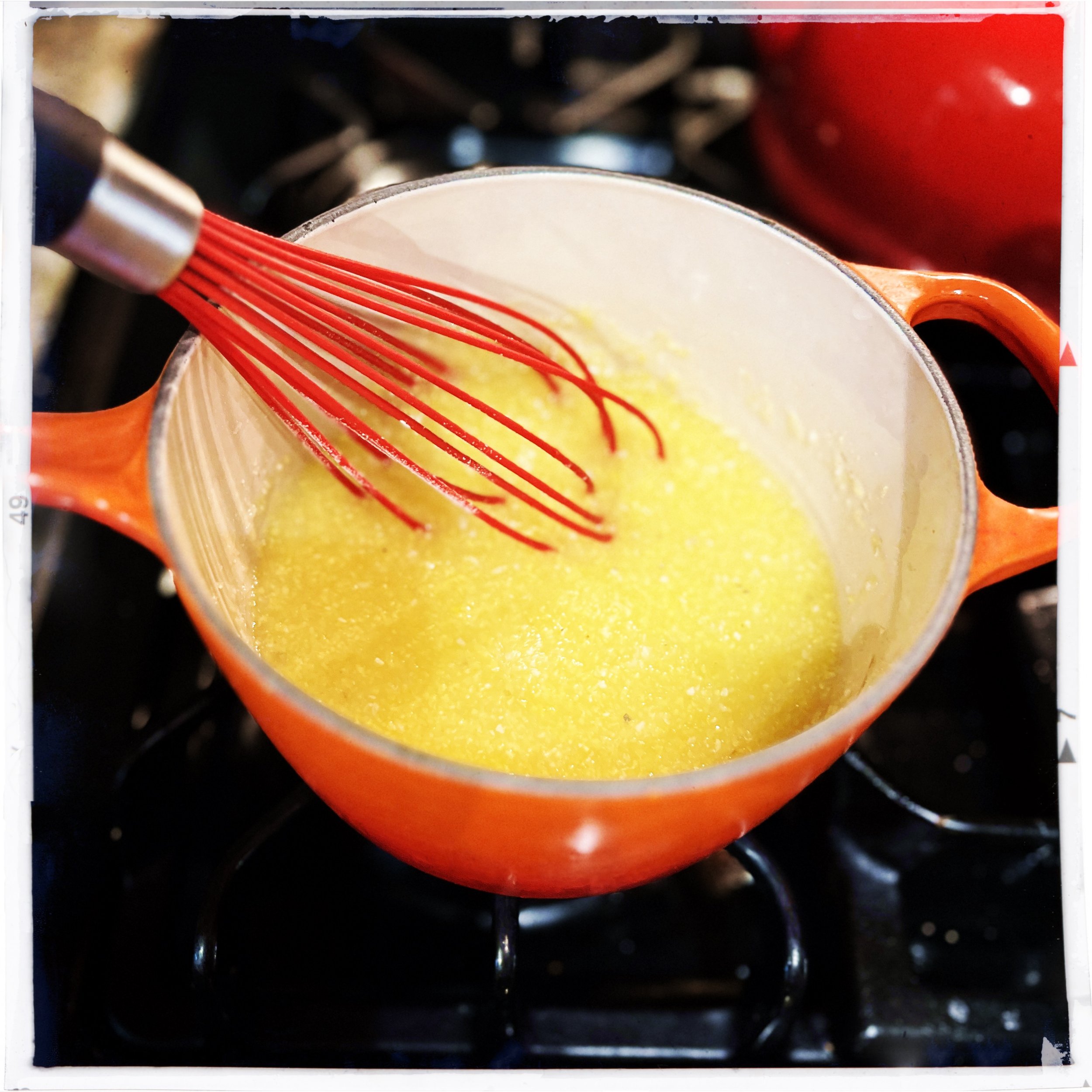Easiest Polenta
Prior to the Colombian Exchange, polenta was made variously with chickpeas, millet, or barley; the salient question seems to have been “will it porridge?” Polenta is gruel, porridge, sticky starch and blank slate, a northern Italian staple dating back to the days of the Romans, and can be served gooey straight from the pot or fried/baked in slices. In the painting above, a batch of polenta is being poured from the pot onto a clean cloth to dry for the latter purpose, and it appears the cook’s ghost, who is for some reason standing behind her, also approves.
Polenta and grits are similar, but strictly speaking, polenta is made from “flint corn” or “Indian corn”, which is harder than the “dent corn” usually used to make grits (which is still harder than the “sweet corn” we eat on the cob.) There is a difference in grind as well—polenta is flakier and coarser than grits. However, the package of Bobs Red Mill polenta/grits I use makes no distinction, so I suspect theirs is all the same variety.
People sometimes shy away from polenta because it has a reputation for being fiddly and taking forever to cook. But according to Francine Segan, there is a phrase in Italy that goes: “La polenta è utile per quattro cose: serve da minestra, serve da pane, sazia, e scalda le mani.” Polenta is good for four things: to make soup, to make bread, to fill you up, and to warm your hands. These are simple peasant sentiments by people who respected their food but had no time for faff. If you start it at the beginning of your cooking session, your polenta will probably be perfectly done by the time everything else is ready. All it requires, after the initial care in whisking, is a periodic stir. Cooking lore may state that you have to use a wooden spoon and always stir in the same direction. This may be true if you want to evoke the powers of Hecate, but I stir mine with a silicone spatula in all kinds of directions and it’s fine.
INGREDIENTS
serves 3-4
1 cup polenta
4 cups water
Healthy dash of salt
2 tbsp butter
6 or so grams grated parmesan or pecorino romano (optional.) Or experiment with some other hard cheese, like aged manchego.
MOREISH:
Enjoy the history of polenta by food historian Francine Segan. Just read it, you’ll have plenty of time while you wait for your polenta.
DIRECTIONS
In a medium saucepan, boil the water and the salt. Add the polenta in a slow stream, whisking continuously so it doesn’t burn.
Turn the heat down to medium, stick it on the back burner if you’re doing other things, and cook for about 45 minutes, stirring frequently so it doesn’t stick or clump. Your polenta will be edible after 20-30 minutes, by the way, but will not have completely gelatinized and may be a teeny bit gritty.
When your polenta is cooked, stir in the grated cheese, if using. Then immerse the two tablespoons of butter into the polenta and let it melt inside, and then stir. Season with salt and black pepper.
FACTOIDS:
Polenta is a hallmark of northern Italian cooking, and “polentoni” is (sometimes) a derogatory term for Northern Italians used by Southern Italians.
There are heirloom polentas, like this one. It is probably delicious, but remember, polenta is peasant food, so you don’t have to get too precious about it.


